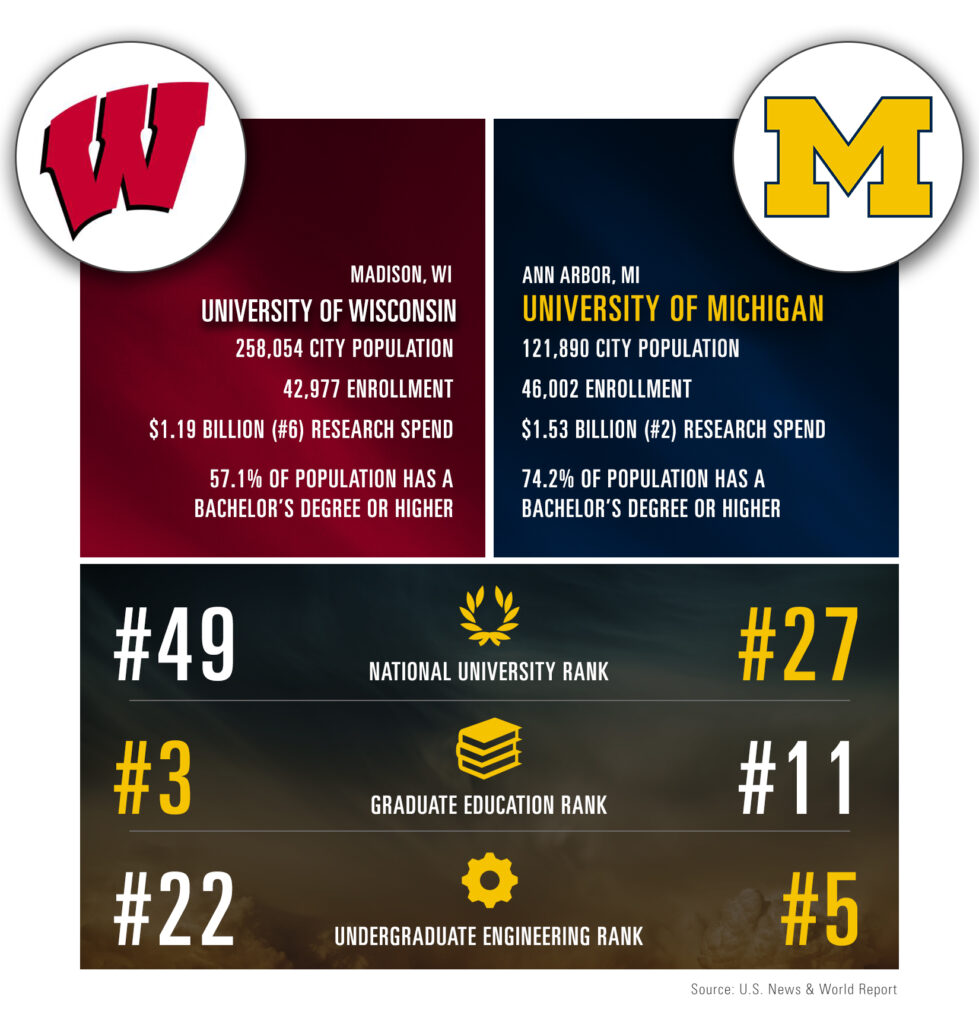
Our football blog series is back for the fourth straight year! We use the football season as an incentive to compare Ann Arbor to cities around the country represented by our U-M football competition. The question is always – how does Ann Arbor compare to other college towns in the U.S.?
Some of our more recent comparisons have felt like comparing apples and oranges. Madison, Wisconsin, however, feels more natural. Perhaps more so than any of our previous comparisons – since we are only separated by Lake Michigan and share basic climate and college-town feel. These similarities mean we often compete in sports, for students, and of course, for business.
Both U-M and UW are incorporated into the city itself, not as urban campuses but as campuses that transition seamlessly into the downtown. The two schools also rival each other for research spending, both breaking the billion-dollar ceiling. Ann Arbor and Madison show up together on many “Best Cities for ____” lists.
These similarities mean that our slight differences become more significant:
- Madison is bigger than Ann Arbor (by about 130,000 people) and is a state capital. This means the industry cluster breakdown is heavily weighted by state government.
- Some say the “feel” is different between the two cities, Madison being bigger, more urban, but not as walkable, with a higher number of distinct neighborhoods.
- Madison is nestled between lakes, while Ann Arbor’s largest natural feature is the Huron River.
- Recently, the “feel” of Ann Arbor has been skewing toward startups, and the same can be said for Madison but to a lesser degree. [Based on venture capital activity over the past two years – check out our recent benchmarking study to learn more.]

Data Dive
Where do we get our numbers? And what do they mean?
- Population comes from the US Census, 2017 Population Estimates. Check out Ann Arbor’s data here.
- Enrollment comes from each university’s website (what they report on enrollment).
- Research spend comes from the National Science Foundation Rankings by Total R&D Expenditures.
- Educational attainment comes from the US Census 2013-2017 American Community Survey 5-Year Estimates. We look specifically at the population over the age of 25, and the highest level attained. Check out Ann Arbor’s data here.
- The rankings come from US News and World Report unless otherwise mentioned.